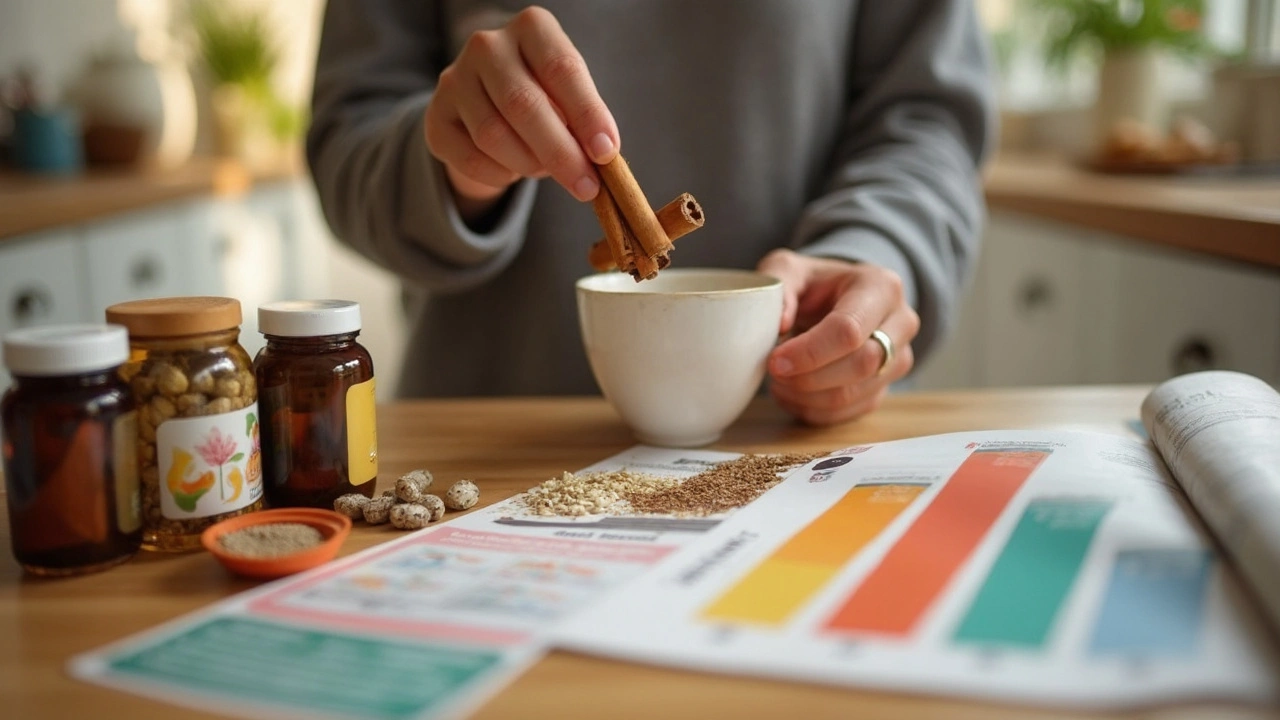Cinnamon: Benefits, Types, and How to Use It Safely
Cinnamon is more than a cozy spice. People use it for flavor, but it also shows modest effects on blood sugar, inflammation, and taste-driven appetite control. If you want to add cinnamon to your routine without risk, know the types, how much makes sense, and which meds or conditions need caution.
What cinnamon can actually do for you
Research from several small clinical trials found cinnamon can lower fasting blood sugar a bit and may reduce LDL ("bad") cholesterol in some people. That doesn’t mean it replaces diabetes meds or statins, but it can be a helpful, low-cost addition when used consistently with diet and exercise. Cinnamon’s aroma and flavor also help people enjoy lower-sugar recipes, which can indirectly cut calories and cravings.
Cinnamon contains compounds like cinnamaldehyde and polyphenols that offer antioxidant and mild anti-inflammatory effects. Those compounds are strongest in whole or minimally processed forms — think sticks or freshly ground — rather than cheap, heavily processed powders.
Types, dosing, and practical tips
There are two common types: Ceylon (true cinnamon) and Cassia. Cassia is cheaper and bolder, but it contains higher levels of coumarin, a compound that can stress the liver if you eat a lot daily. If you plan to use cinnamon every day, Ceylon is the safer long-term choice. For occasional use, cassia is fine in recipes.
How much is reasonable? For flavor, 1/4 to 1 teaspoon per serving works well. For daily use, many people stick to 1/2–1 teaspoon (about 1–2 grams) per day from food. Supplements often supply higher amounts (for example, 500 mg once or twice daily), but talk to your clinician before starting supplements, especially if you’re on other medicines.
Easy ways to add cinnamon: sprinkle it on oatmeal or yogurt, stir it into coffee or smoothies, toss it into stews or roasted vegetables, or use it in spice rubs for meat. Whole sticks are great for simmering with apples or rice to release flavor without extra sugar.
Watch out for concentrated forms. Cinnamon essential oil is very strong and can irritate skin or mucous membranes. Don’t apply it undiluted. Also avoid cinnamon challenge trends like eating raw spoonfuls — that can cause coughing, throat irritation, or GI upset.
If you have diabetes, liver disease, or take blood thinners (like warfarin), check with your doctor before increasing cinnamon. It can enhance blood sugar lowering and interacts with coumarin-sensitive pathways. Pregnant people should avoid high-dose supplements; food amounts are generally safe but verify with your care provider.
Bottom line: cinnamon is a useful, flavorful tool with some health perks when used sensibly. Prefer Ceylon for daily use, keep intake moderate, and check interactions if you’re on medication. Small, consistent changes — like adding a sprinkle to breakfast — are the easiest and safest way to benefit from this classic spice.

Best Herbal Metformin Alternatives: Cinnamon, Fenugreek & More for Blood Sugar Control
This article dives deep into the clinical evidence behind using common botanicals like cinnamon and fenugreek as natural alternatives to Metformin for managing blood sugar. It unpacks the science, real-world experiences, and useful tips on effective herbal supplements, and guides readers through what to expect if they're considering such substitutes. Enjoy an engaging, fact-filled read with practical advice and reliable information for anyone interested in natural glycemic control options.
- Health and Wellness (58)
- Drug Information (45)
- Pharmacy Information (19)
- Medical Conditions (17)
- Supplements (4)
- Travel Health (2)
- Parenting (2)
- Diabetes (2)
- Mental Health (2)
- Heart Health (1)
-
Nimotop vs. Alternative Calcium Channel Blockers: A Practical Comparison
28 Sep 2025 -
Hucog HP vs. Other HCG Options: Detailed Comparison and Guidance
10 Oct 2025 -
Delayed Medication Side Effects: Recognizing Late-Onset Adverse Reactions
18 Nov 2025 -
Revolutionize Your Health with Angostura: The Must-Have Dietary Supplement for 2021
13 May 2023 -
Womenra (Sildenafil) vs Other ED Pills - Benefits, Cost & Side Effects
25 Sep 2025

29.04.25
Alistair Mukondiwa
11